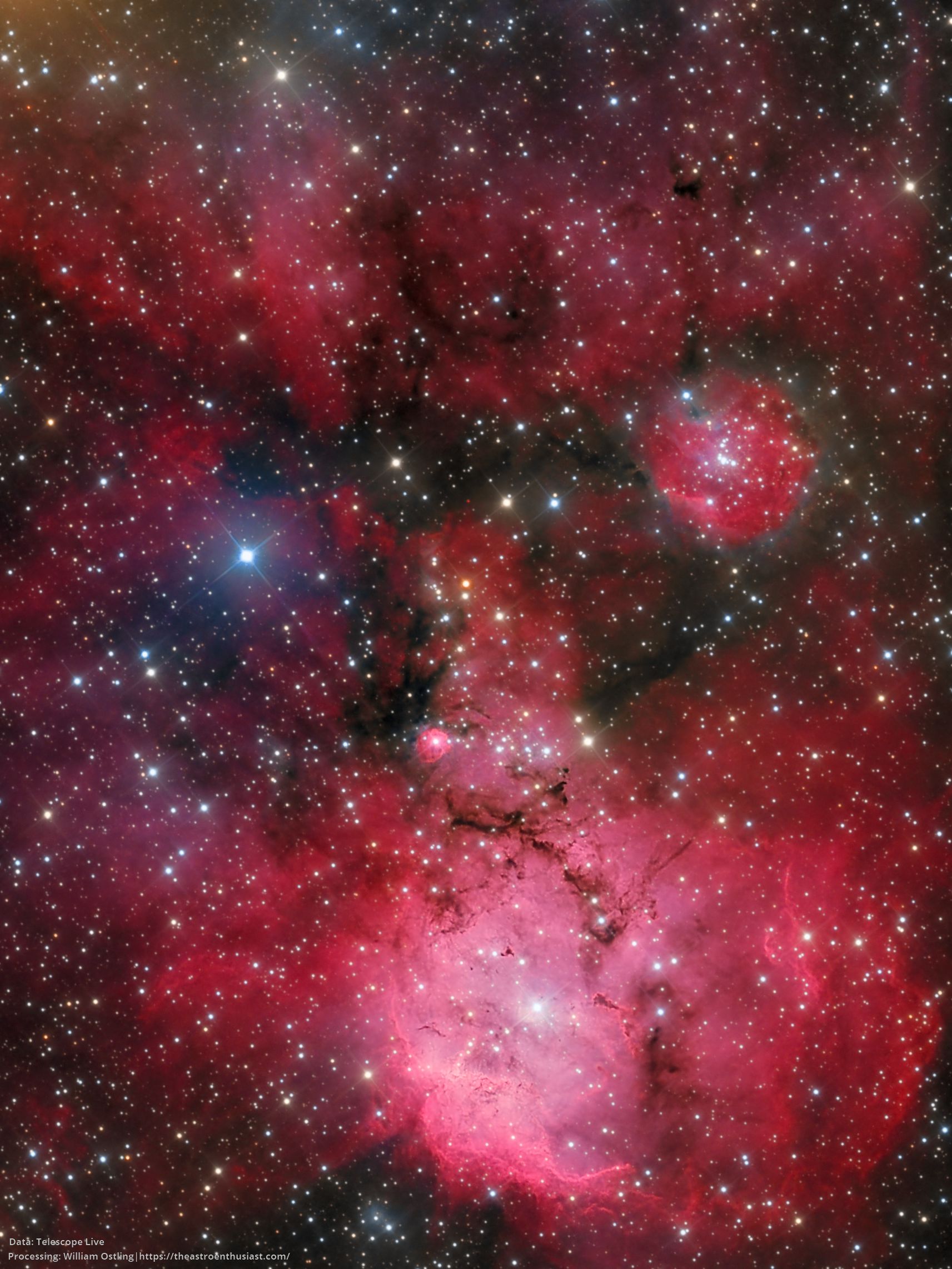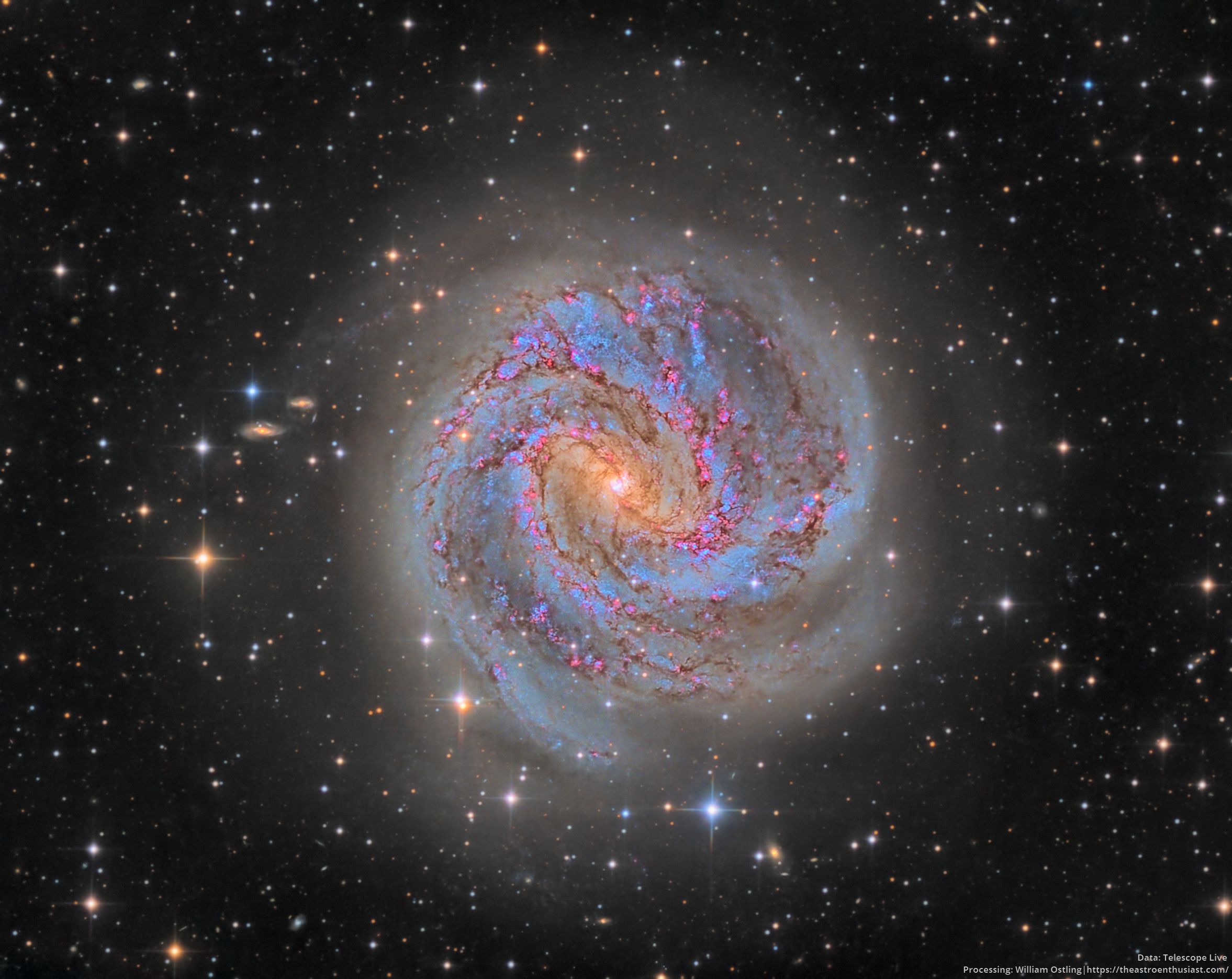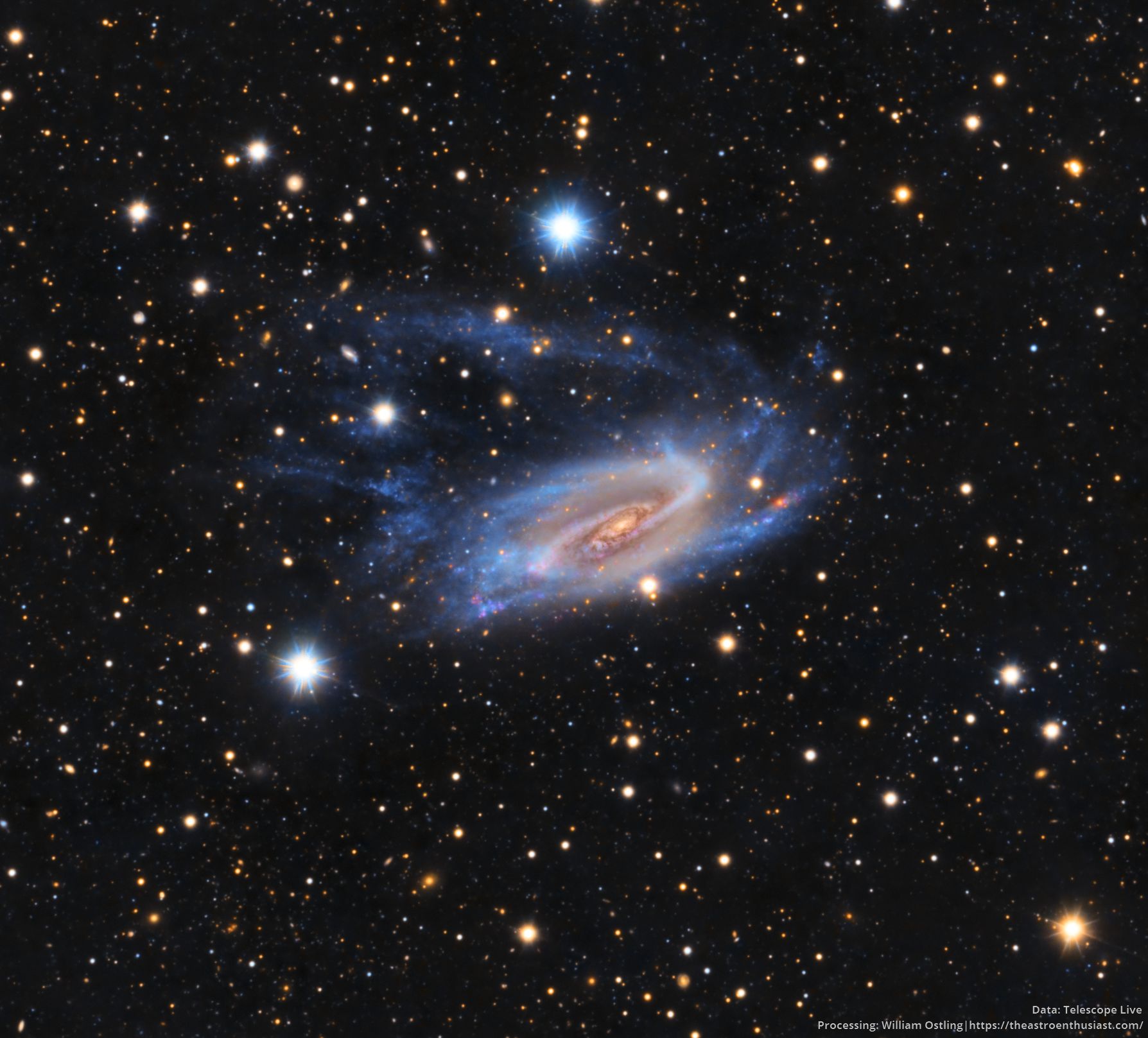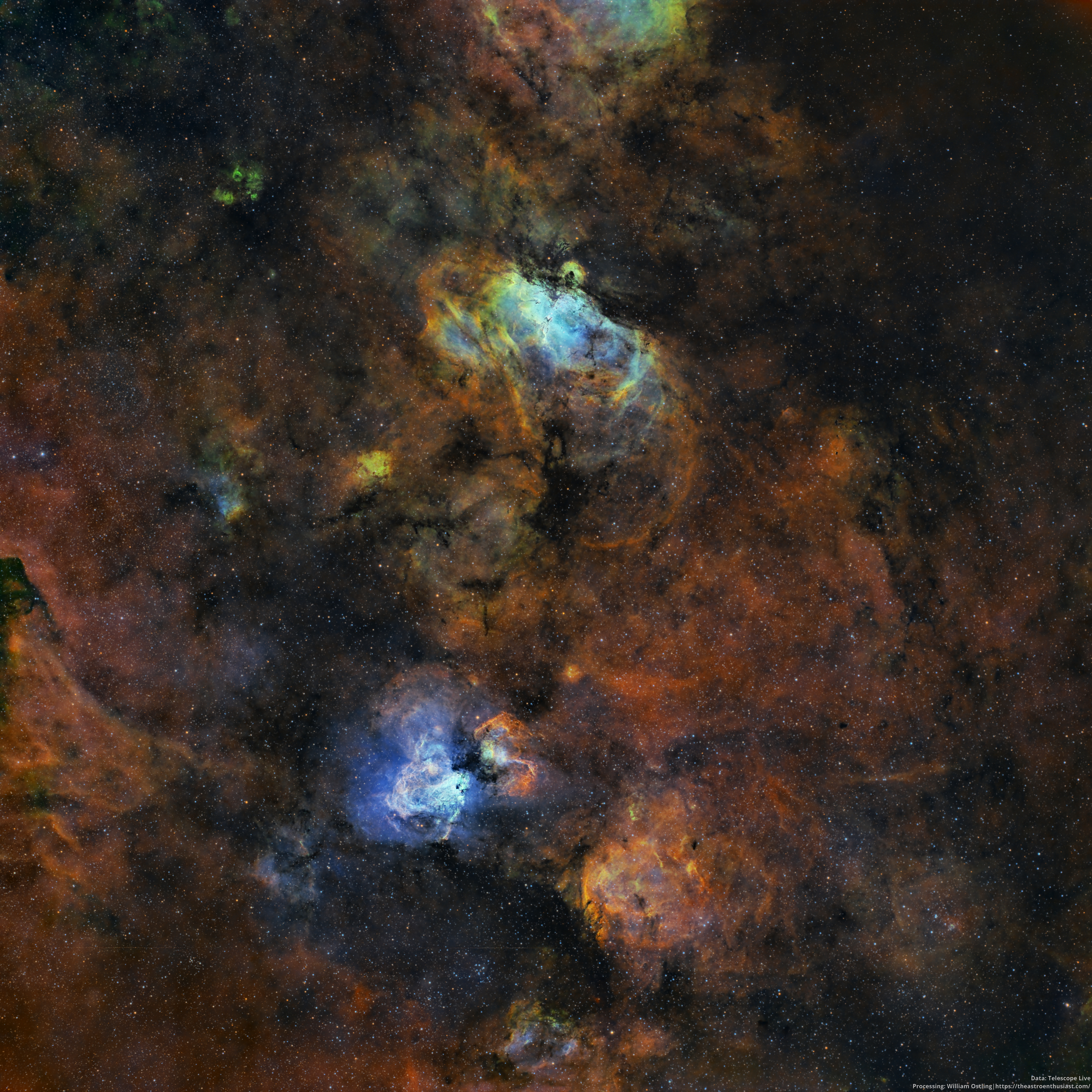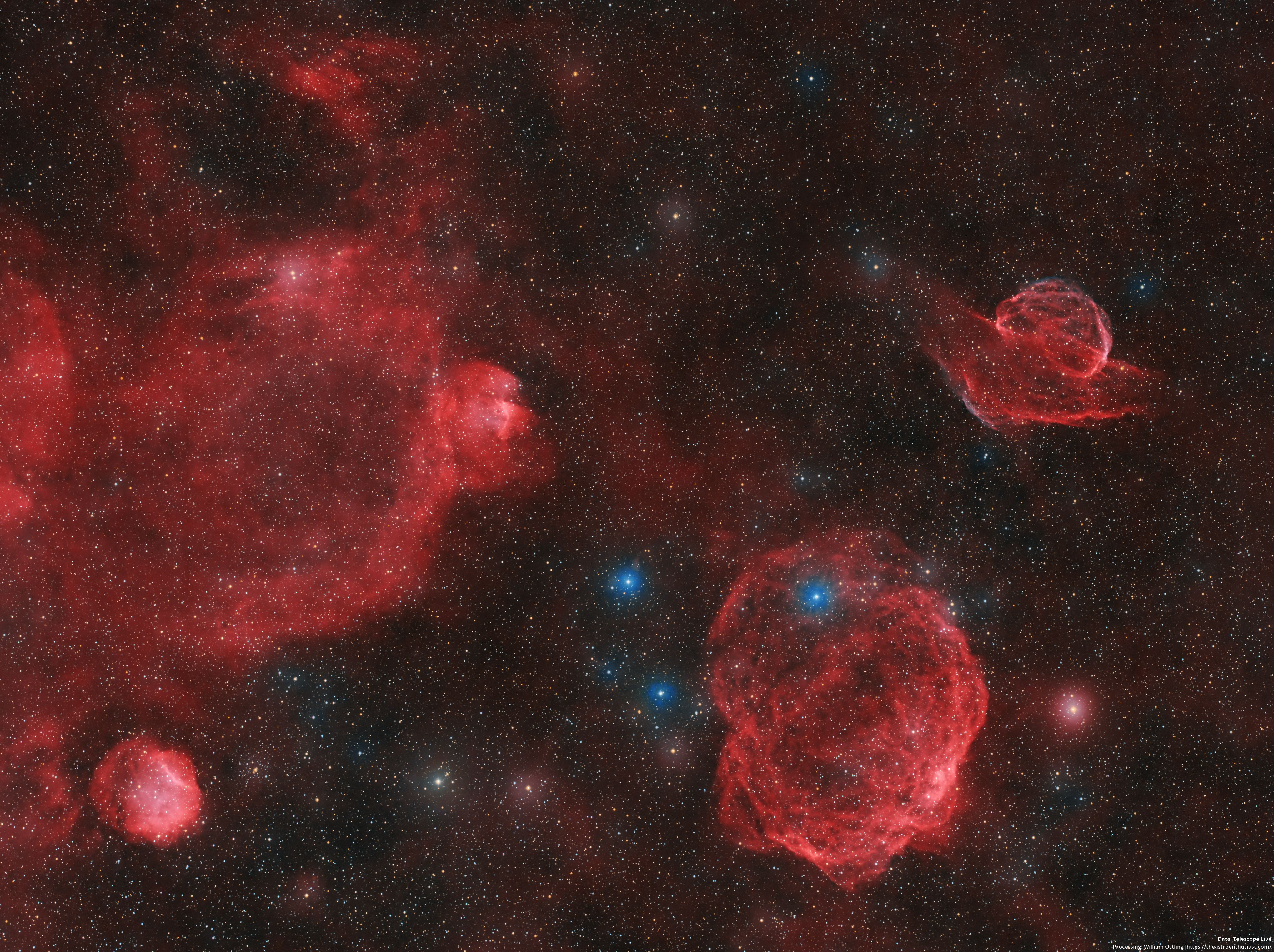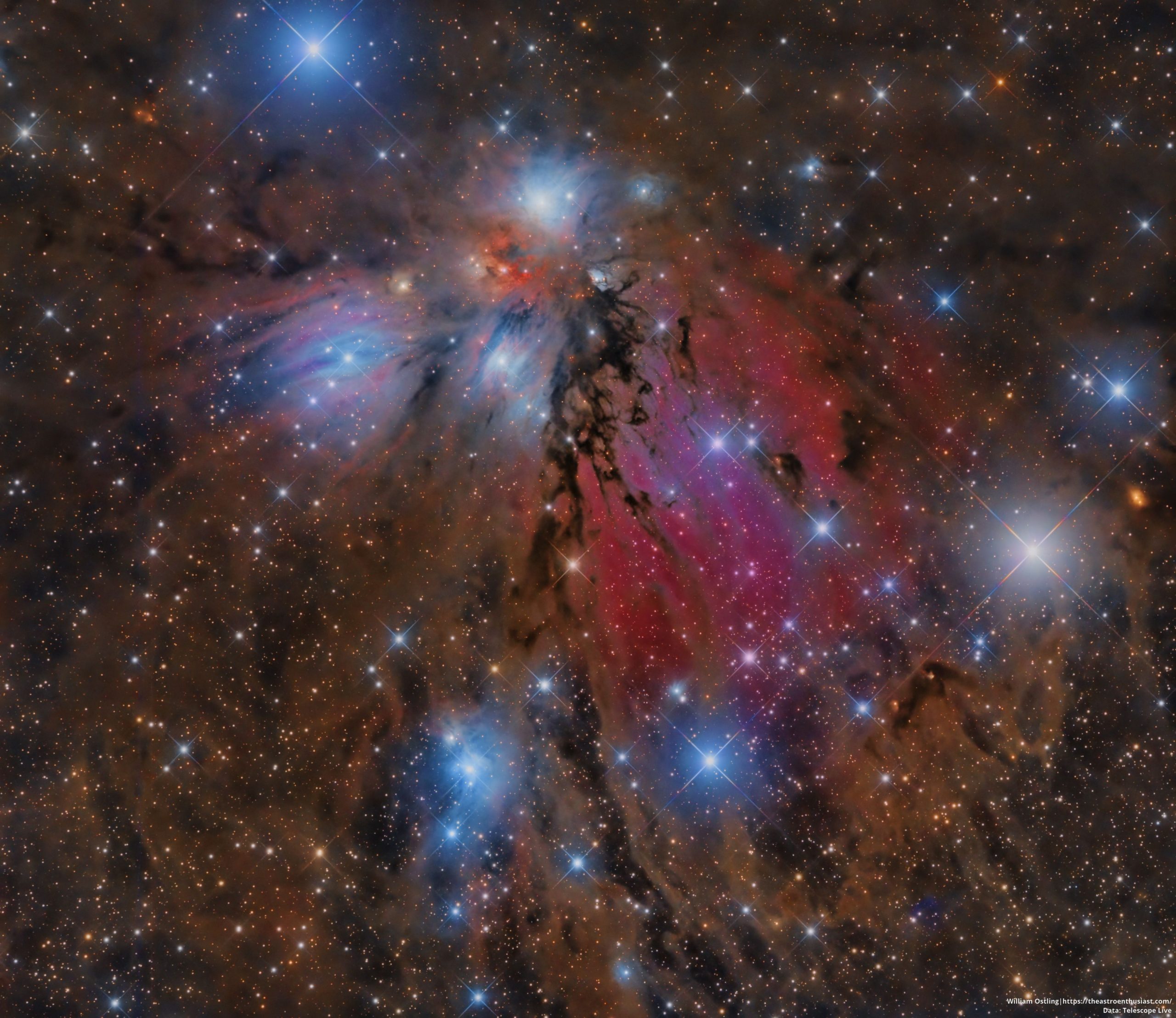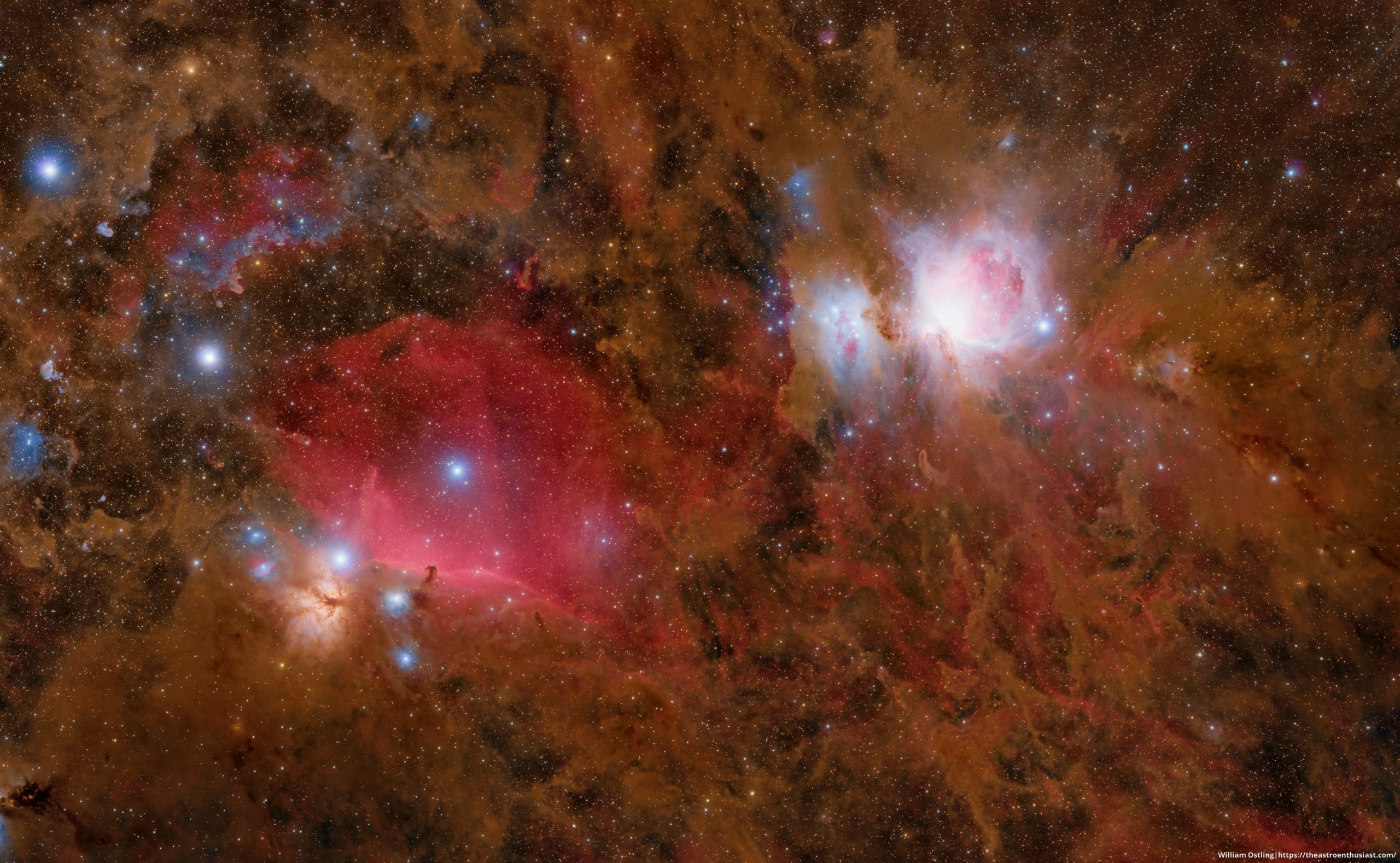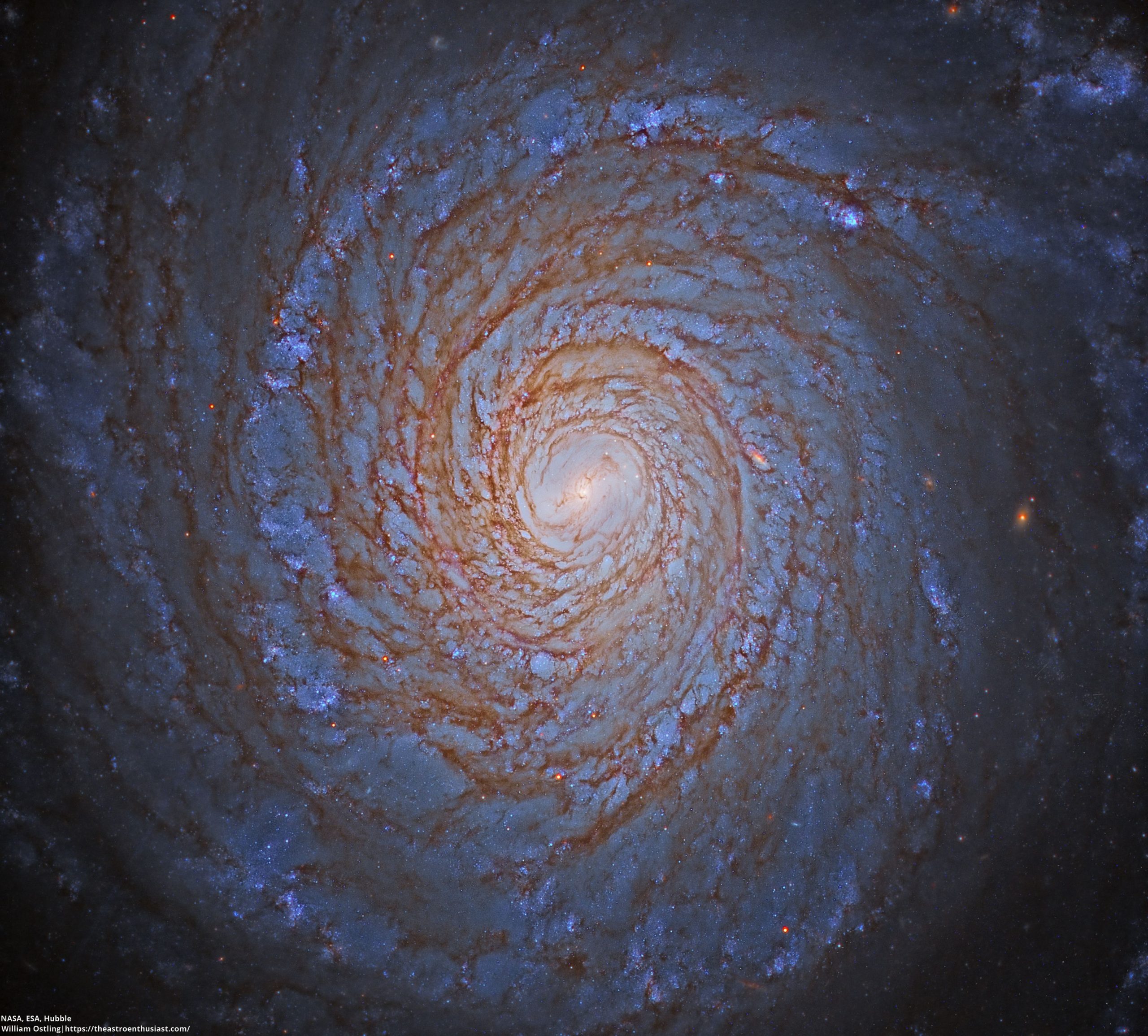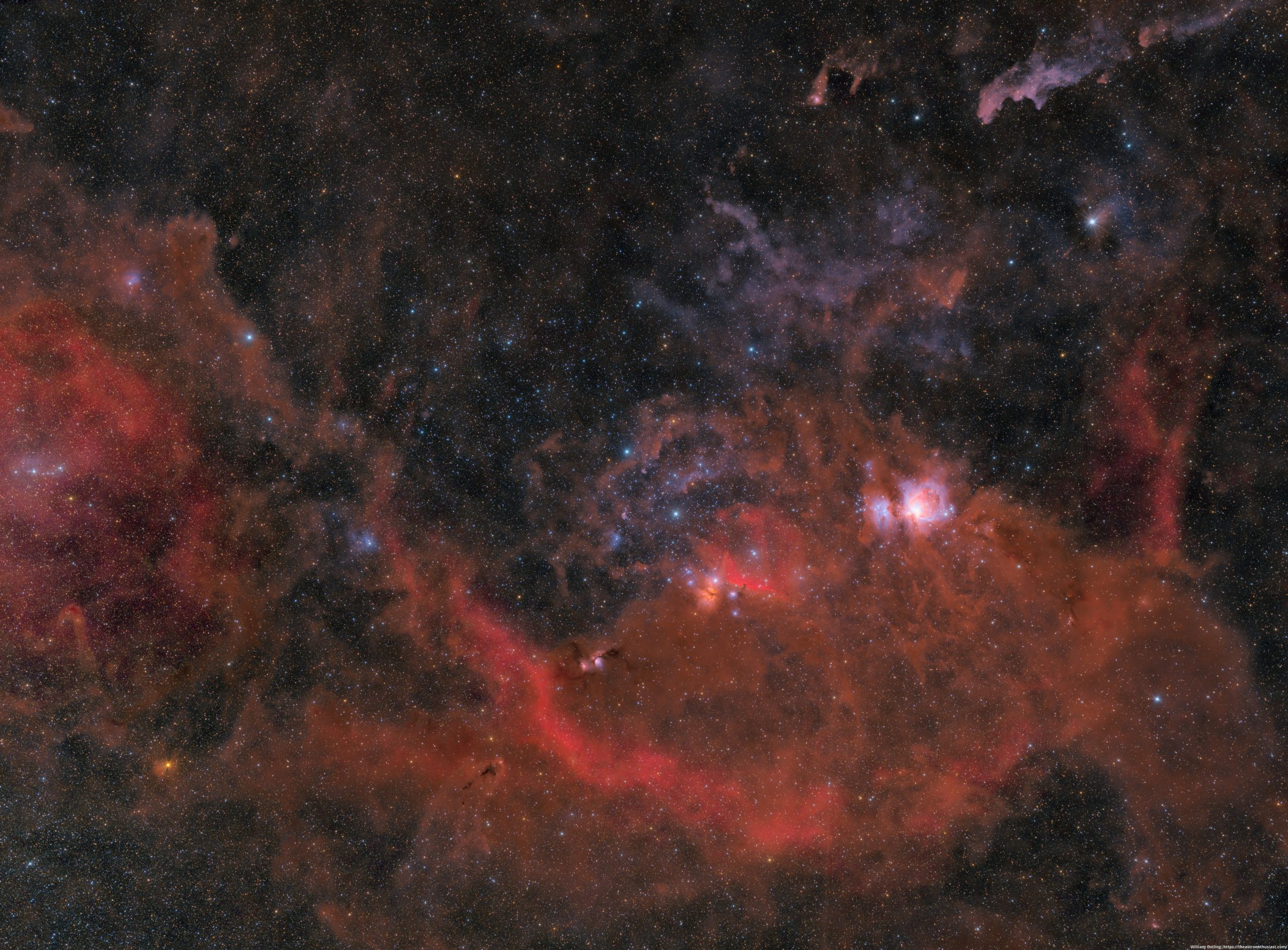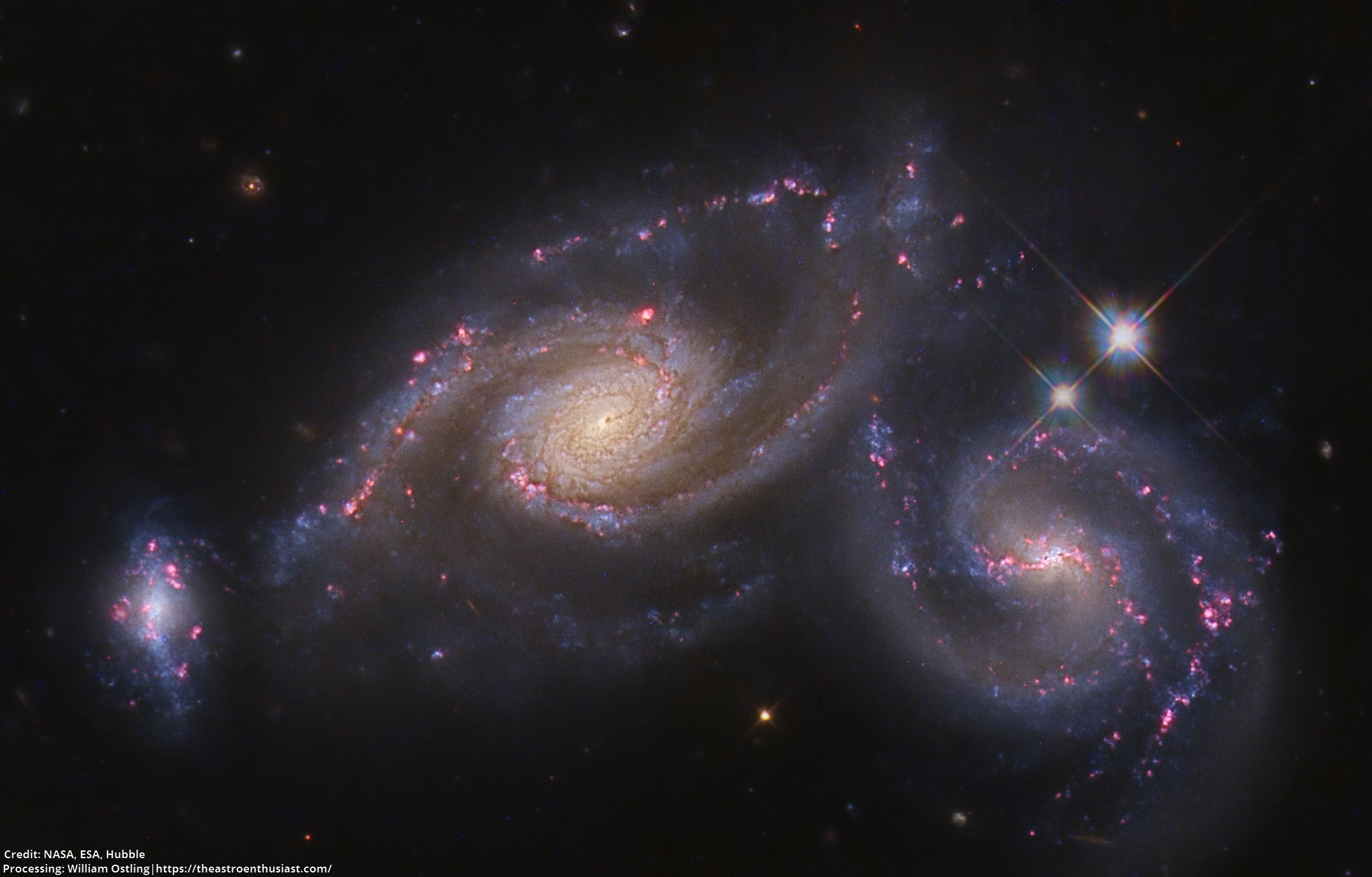Reflection and emission in SH2-311: The skull and crossbones nebula
Yet another image from telescope live. This was a super fun dataset to work with – even though the total integration time was only 6h 40min, the data was very clean and easy to play with. I decided to experiment with a way to separate broadband reflection and H-alpha emission using continuum subtraction only from LRGB data. Even though this method isn’t very “scientific,” it does an extremely good job of letting me enhance different parts of the nebulae. I haven’t seen many LRGB images of this […]
Read more